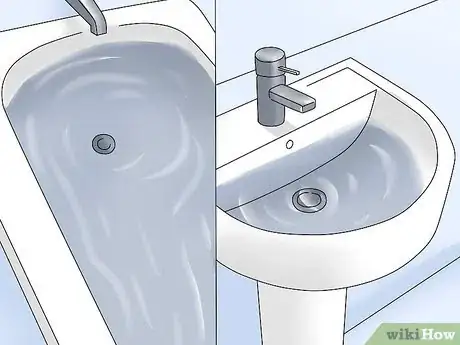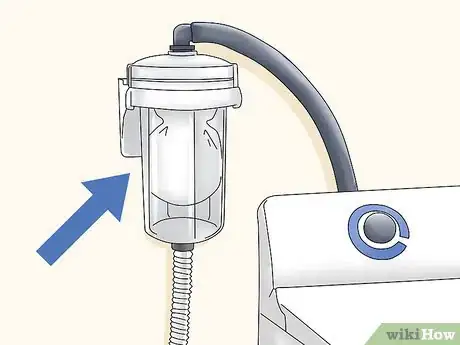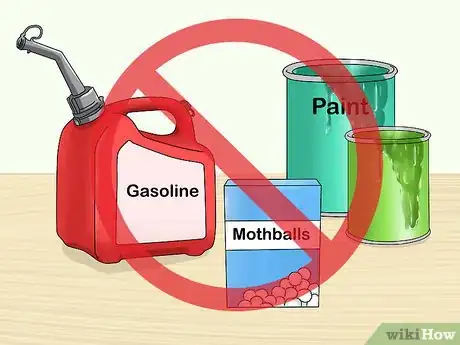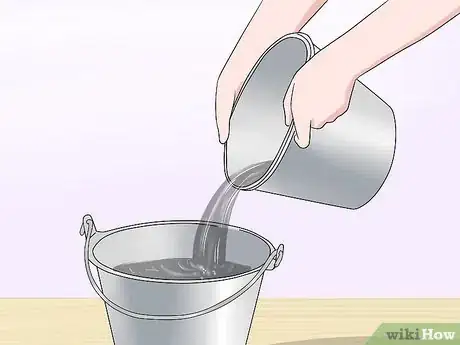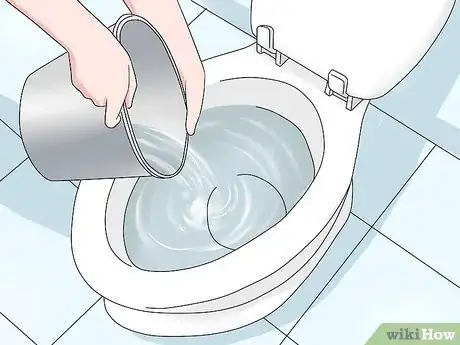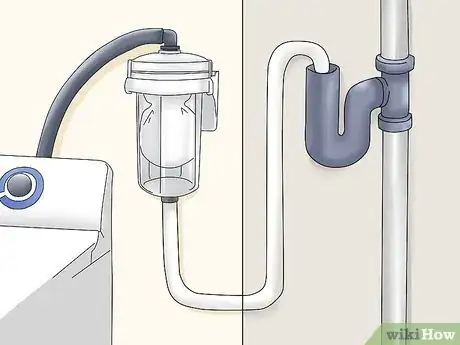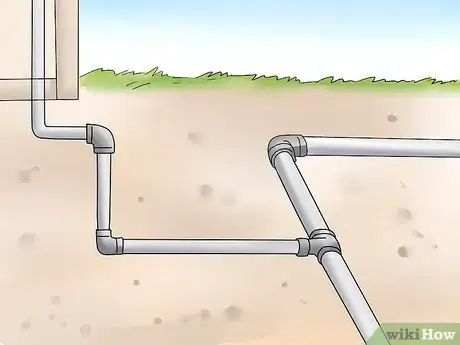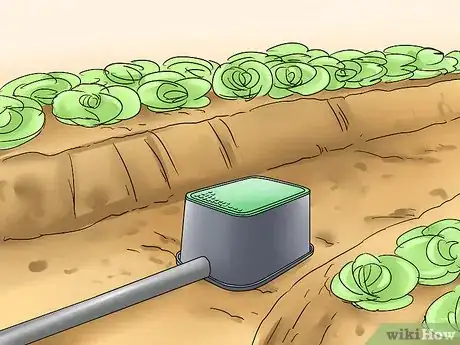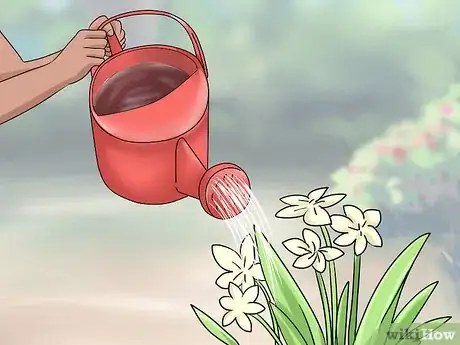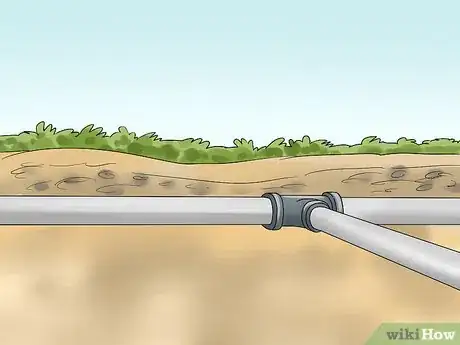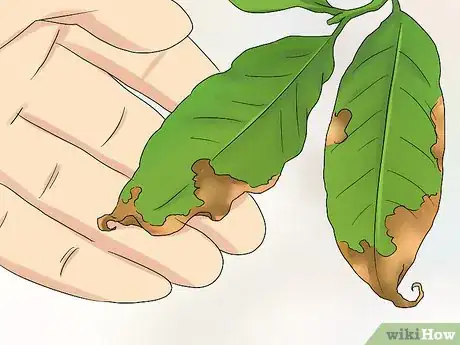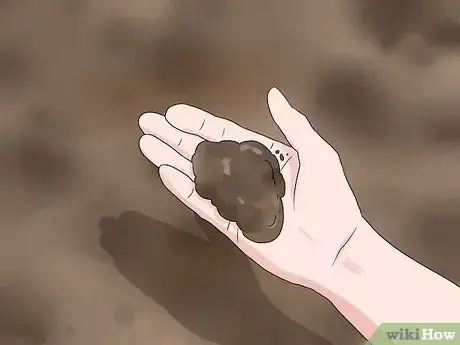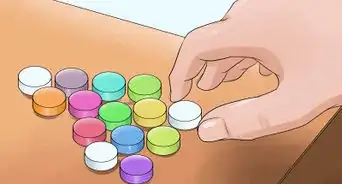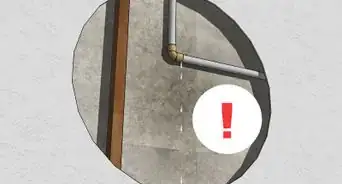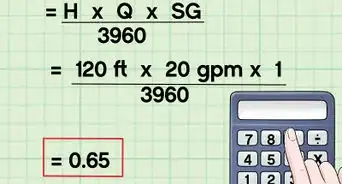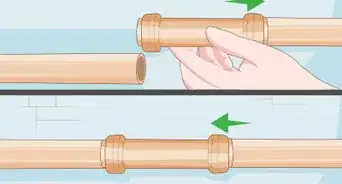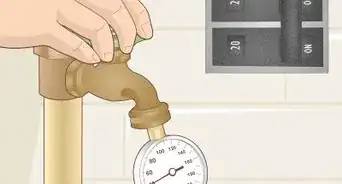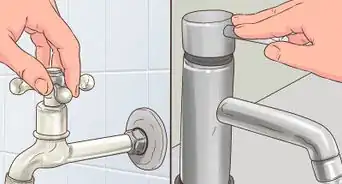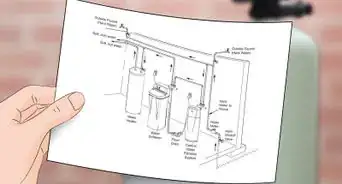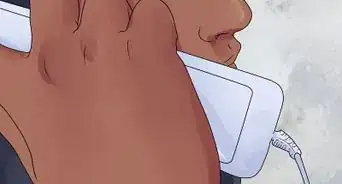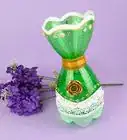This article was co-authored by Bess Ruff, MA. Bess Ruff is a Geography PhD student at Florida State University. She received her MA in Environmental Science and Management from the University of California, Santa Barbara in 2016. She has conducted survey work for marine spatial planning projects in the Caribbean and provided research support as a graduate fellow for the Sustainable Fisheries Group.
This article has been viewed 92,923 times.
With many areas of the planet suffering from drought, now is the time for water conservation. In the developed world, washing creates huge amounts of dirty water that can still be used to water most plants. Repurpose this water, and you can "go green" while saving on your water bill. It's a win-win.
Steps
Collecting Water to Recycle
-
1Identify grey water. This refers to any used water with a low level of contamination, and no exposure to feces, fats, or oils. This is the easiest and safest type of water to recycle. Common sources of grey water include:
- Showers and baths
- Bathroom sinks (but never kitchen sinks)
- Laundry (but see below)
-
2Check your detergent and cleaning compounds. Most laundry detergent contains high concentrations of sodium and chloride compounds. These make the water dangerous to plants. Switch to biodegradable detergent if you plan to recycle this water for your garden.[1] Similarly, avoid using any cleaners that contain boron, bleach, or sodium in an area that leads to grey water collection. Ammonia cleaners are a safe substitute.
- Do not use liquid softener in the laundry, or detergent that advertise a softening effect. Switch to fabric softener sheets in the dryer instead.
Advertisement -
3Install a microfiber filter if you want to use grey water from a laundry machine. Grey water that comes from laundry machines can be contaminated with small microfibers that break off from the fabrics you wash. Microfibers are non-biodegradable and they're often coated with chemicals, so it's important that you filter them out of your grey water before you use it in your garden.[2]
- You can also use a microfiber laundry ball to collect loose microfibers in your laundry machine.
-
4Ban dangerous and greasy materials from your grey water. Do not wash anything in your shower, bathroom sink, or laundry that came into contact with gasoline, paint, mothballs, or other harsh chemicals. Also avoid washing oil or fat into these systems, as grease can clog soil and fail to drain.[3]
- Water from laundry that includes diapers or blood-soiled clothing should never be recycled without professional treatment. This is "black water," or water that contains biohazards or other major health risks.
-
5Gather grey water in buckets. This is the easiest way to get started recycling water. Just put down a bucket in the shower, or disconnect a bathroom sink trap and place a bucket under the opening. Although no serious health consequences have been traced back to grey water handling, health organizations recommend these precautions:[4]
- Never store untreated grey water for more than 24 hours, or bacteria can multiply to unsafe levels. Since an odor can develop within a few hours (especially with shower water), you may want to limit this to even shorter storage lengths.
- Avoid skin contact with grey water. Wear gloves while carrying the buckets.[5]
-
6Pour grey water into the toilet bowl. Pour the grey water directly into the toilet bowl to flush. Never pour grey water into the toilet tank, as this can backflow into the clean water supply, or clog the flushing mechanism.
-
7Consider a "laundry to landscape" pipe. This pipe diverts grey water from your washing machine directly to 1 inch (2.5 cm) backyard tubing. This directs the water to several mulch-filled basins around your yard.[6] This is not the most efficient way to irrigate, but it is one of the cheapest and easiest to set up.
- Read the garden instructions below before you set this up.
- Install a filter in this system and clean it regularly.
-
8Install an automatic grey water collection system. Instead of hauling buckets to your garden, you may alter your plumbing to automatically divert grey water to another purpose, usually a drip irrigation system in your garden. Here's a basic overview:[7]
- Check your local, state, and country laws. California in particular has strict permit requirements.[8]
- Keep grey water pipes clearly labeled and completely separate from clean water plumbing. Excess should drain into the sewage system, with a valve preventing backflow.
- To reduce the chance of clogs, use pipes with diameter 1½ to 2 inches (4-5 cm) and avoid U-bends.
- If you want to store your grey water for more than 24 hours, you'll need to have a plumber install a grey water treatment device. Due to expense, these are mainly used by businesses, but they are available for households.
-
9Consider a dark water treatment system. "Dark water" generally refers to waste water that's more difficult to recycle than grey water, but not outright unusable (that's "black water"). If you're in an area with a severely limited water supply, you may want to take advantage of this as well:
- The kitchen is the most common source of dark water, containing grease, food contaminants, and powerful detergents from the dishwasher.
- At minimum, you will need to install a grease trap and filter before using this water in the garden. You may also need a treatment device to remove other contaminants.
- While the bathroom sink creates grey water, hooking it up to the dark water system can help flush through the particle-heavy water.
Watering Your Garden with Grey Water
-
1Start small. Most grey water contains some quantity of sodium and chloride compounds from soaps and detergent. This can build up in the soil and damage your plants if you overuse the grey water. Minimize the risk by alternating between grey water and fresh water, or by spreading the grey water across a large area with a drip irrigation system.
- Grey water contains beneficial chemicals as well, such as nitrogen and phosphorus. You may want to reduce your fertilizer use to avoid excess phosphorus.
-
2Choose your plants wisely. Young plants and plants in small containers are more susceptible to sodium buildup. Direct the grey water to mature plants instead.[9]
- Never use grey water on vegetables that come into direct contact with the soil, or on leafy green edible plants.
- Fruit tree regulations vary by region. California limits grey water use to citrus and nut trees. Queensland allows grey water for all fruit trees, as long as irrigation stops two weeks before picking, and no fruit is picked up off the ground.[10]
- Grey water tends to raise soil pH. Keep it away from plants that prefer acidic soil, such as rhododendrons, ferns, and azaleas.
-
3Keep the water off the surface. Ideally, the grey water should travel through subsurface irrigation lines. Surface irrigation is fine as long as humans and pets minimize contact with the soil, and the grey water drains rapidly. Since it contains bacteria, never allow the water to form puddles on the surface or runoff into a storm drain or water supply. Do not use a sprinkler system, as this sends the water into the air.[11]
-
4Watch plants for signs of damage. If you see "burns" at the edge of leaves, a pale bleached color in new leaf growth, dying branches, or stunted growth, switch back to fresh water.[12] The harmful compounds can build up over time, so continue to check regularly.
-
5Mitigate harmful effects. You can reduce the risk of damage and help treat existing damage with the following practices:[13] [14]
- Keep the soil slightly damp so the sodium drains through.
- Lower soil pH with soil additions until the pH is around 7.
- Add 2 inches (5 cm) mulch to the soil surface.
Community Q&A
-
QuestionHow can I conserve water?
 Community AnswerYou can turn off the tap when you brush your teeth – this can save 6 liters of water per minute. You can also take shorter showers or have a cistern displacement device placed in your toilet cistern to reduce the volume of water used in each flush. For more tips, check out wikiHow's article on saving water.
Community AnswerYou can turn off the tap when you brush your teeth – this can save 6 liters of water per minute. You can also take shorter showers or have a cistern displacement device placed in your toilet cistern to reduce the volume of water used in each flush. For more tips, check out wikiHow's article on saving water.
Warnings
- If collecting hot water, let it cool before you use it in the garden.⧼thumbs_response⧽
- Grey water is not ideal for plants that are extra susceptible to salinity (e.g. holly, redwood), or to excess phosphorus (Proteaceae spp.)[15]⧼thumbs_response⧽
References
- ↑ http://applications.emro.who.int/dsaf/dsa1203.pdf
- ↑ https://www.ncbi.nlm.nih.gov/pubmed/27689236
- ↑ http://applications.emro.who.int/dsaf/dsa1203.pdf
- ↑ http://applications.emro.who.int/dsaf/dsa1203.pdf
- ↑ https://www.nachi.org/greywater-inspection.htm?loadbetadesign=0
- ↑ http://www.motherearthnews.com/green-homes/home-design/greywater-zm0z11zphe.aspx
- ↑ https://www.nachi.org/greywater-inspection.htm?loadbetadesign=0
- ↑ http://greywateraction.org/requirements-for-no-permit-systems-in-california/
- ↑ https://ag.umass.edu/greenhouse-floriculture/greenhouse-best-management-practices-bmp-manual/water-quality-for-crop
- ↑ http://applications.emro.who.int/dsaf/dsa1203.pdf
- ↑ http://applications.emro.who.int/dsaf/dsa1203.pdf
- ↑ http://applications.emro.who.int/dsaf/dsa1203.pdf
- ↑ http://applications.emro.who.int/dsaf/dsa1203.pdf
- ↑ http://greywateraction.org/requirements-for-no-permit-systems-in-california/
- ↑ http://applications.emro.who.int/dsaf/dsa1203.pdf
About This Article
To recycle water, focus on collecting grey water, which is used water with low contamination levels that hasn't been exposed to sewage, fats, or oils. You can collect grey water from showers and baths, bathroom sinks, and laundry machines. To start collecting grey water, put a bucket down in your shower or under the opening of your bathroom sink trap. Then, you can use the collected water to flush your toilet and water your garden. Just make sure you use up the water within 24 hours so bacteria doesn't grow. To learn how to water your garden with grey water, scroll down!
